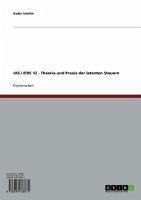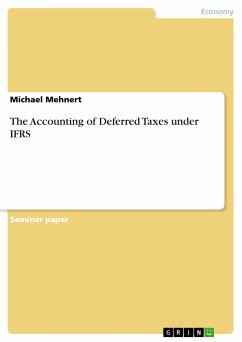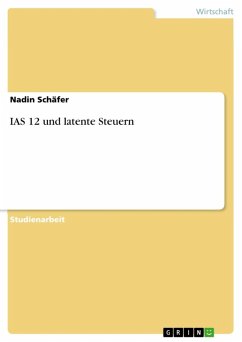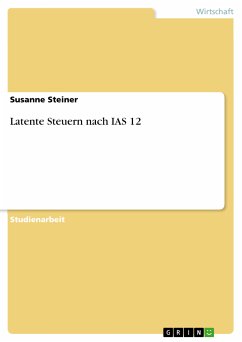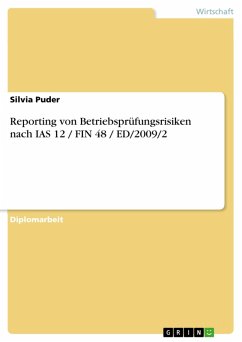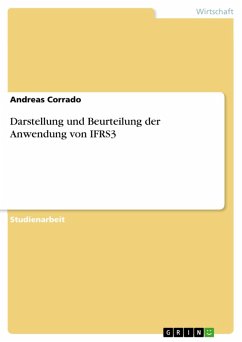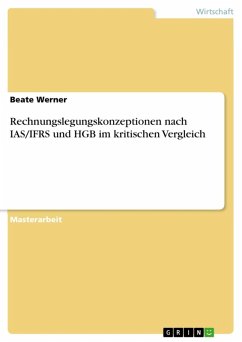Seminar paper from the year 2005 in the subject Business economics - Accounting and Taxes, grade: 1,0, University of Applied Sciences Eberswalde, language: English, abstract: By writing this report I would like to introduce the reader into the topic of deferred taxes by using the International Accounting Standard 12. Therefore I would like to introduce you into the topic deferred taxes by giving you the theoretical basic concept of deferred taxes. The theoretical basic concept of deferred taxes should give you the idea and a definition of deferred taxes. Afterwards I would like to present the different causes for creating deferred taxes. The causes for creating deferred taxes will be emphasized by give examples. For a better understanding I would like to explain in the following the steps the methods of determination. You have to know that the IAS determines the deferred taxes by using the temporary concept. Because I would like to underline the differences I will present in short form the timing concept too. The temporary concept includes the timing and the temporary differences and excludes the permanent differences. Now we have to find a definition for each type of difference. If we know the idea of deferred taxes and we know how to determine them, we will be interested in the evaluation of deferred taxes. Therefore I will describe the liability method used by IAS and to show the differences I will describe the deferred method. For a better understanding I would like to conclude my report by giving the different way of calculation deferred taxes by using the deferred method and the liability method.
Dieser Download kann aus rechtlichen Gründen nur mit Rechnungsadresse in A, B, BG, CY, CZ, D, DK, EW, E, FIN, F, GR, HR, H, IRL, I, LT, L, LR, M, NL, PL, P, R, S, SLO, SK ausgeliefert werden.



